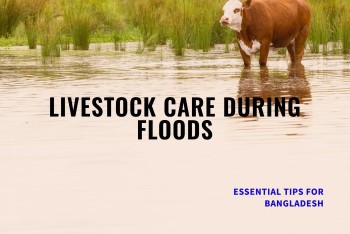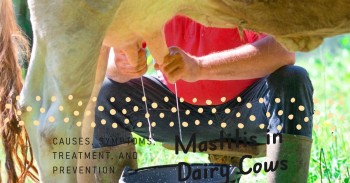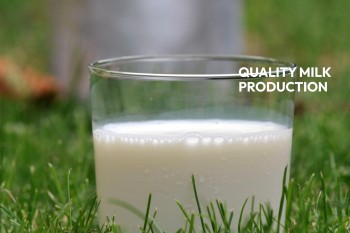Livestock Health
Management 101 🐄: A Veterinary Guide to Cattle Wellness
Keeping cattle healthy
is a top priority for livestock owners. As a veterinary professional
specializing in herd health, I am often asked about the fundamentals of cattle
wellness - from providing proper nutrition to utilizing vaccinations and
maintaining disease prevention protocols. In this comprehensive guide, we will
delve into the key aspects of livestock health management, equipping cattle
owners with the knowledge and tools for building a thriving herd.
Fundamentals of Cattle Health
When managing herd
health, the fundamentals include good nutrition, vaccinations, sanitation,
housing, and disease prevention and treatment. By proactively supporting
wellness in these core areas, cattle owners can optimize growth, productivity
and longevity within their herd.
Nutrition - The Fuel
for Growth 🥕
Nutrition is the
foundation of livestock wellness, providing the nutrients cattle need for bone,
tissue, and muscle development. As ruminants, cattle require fibrous roughage
and high quality forage. Here we will explore key nutritional considerations
when feeding beef or dairy cattle.
Key Nutrients in Cattle Diets
Cattle diets should
include proper levels of:
·
Energy: Metabolizable
energy from carbohydrates and fats. This supports growth and lactation.
·
Protein: Especially
rumen degradable protein to enable gut function and growth.
·
Vitamins & Minerals: Like calcium, phosphorus, magnesium, potassium. These
support enzymatic processes, bone strength, immunity, and more.
Alongside sufficient
nutrition, always provide cattle with constant access to clean, fresh water.
This supports digestion, nutrient absorption, and overall systemic functioning.
Beef Cattle Nutrition
For beef cattle like
cows, steers, and bulls, nutrition programs should focus on:
·
Grass & Hay: 2-3% of body weight in dry matter per day. Provide
high-quality grass and hay.
·
Grains: Supplemental
grains can include corn, barley, oats. This boosts energy.
·
Vitamin & Minerals: Supplements to balance grass-based diets.
Monitor body condition
scoring to assess if adjustments in feed quantity or quality are needed. Refer
to the body condition scoring guide from BDVets for assessments.
Beef cattle thrive on fibrous roughage from grass and hay feeding
programs
Dairy Cattle Nutrition 🥛
For lactating dairy
cows producing milk, nutritional needs differ. Recommended feeding programs
include:
·
Hay: At least 1% of
body weight per day, provide quality hay.
·
Silage: Fermented,
high-moisture fodder. An excellent source of nutrients.
·
Grains: 1
lb of grain for every 3-4 lbs of milk production. Boosts energy.
·
Protein: 14-18%
crude protein. Supports milk supply.
·
Vitamin & Mineral Mix: Formulated to support lactation demands.
Monitor milk
production, body conditioning, and signs of malnutrition or illness. Adjust
diets to optimize nutrition for milk supply and cattle health.
Quality nutrition supports healthy dairy cows and milk
production
Now that we have
covered fundamental cattle nutrition, let us explore the key role of
vaccinations in herd health management.
Vaccinations for Disease Prevention 💉
Vaccinating beef and
dairy cattle is crucial for preventing illness and death losses. By
administering vaccines, cattle develop antibodies and immunities against
dangerous infectious diseases.
Types of Vaccines
The main categories of
cattle vaccines include:
·
Killed vaccines: Contain inactivated disease antigens. Stimulate antibody
production.
·
Modified live vaccines: Utilize attenuated pathogens. Induce
antibody/cell-mediated immunity.
·
Subunit vaccines: Use specific antigenic proteins from pathogens. Also spark
antibody production.
Killed vaccines and
modified live products can be used individually or combined in vaccine
protocols for broad protection against respiratory, enteric, reproductive and
systemic cattle diseases.
Commonly Used Cattle
Vaccines
Some of the most
common vaccines used in herd health programs include:
Respiratory Disease Vaccines
·
IBR (Infectious bovine
rhinotracheitis)
·
PI3 (Parainfluenza
type 3)
·
BRSV (Bovine
respiratory syncytial virus)
·
Mannheimia
(Pasteurella)
Reproductive Vaccines
·
Leptospirosis
·
Campylobacter
·
Vibriosis
Clostridia Vaccines
·
Blackleg
·
Enterotoxemia
·
Malignant edema
·
Redwater disease
Pinkeye Vaccines
·
Moraxella bovis
Scours Vaccines
·
Rota-Corona
·
E. coli
Other Vaccines
·
Foot and Mouth Disease
·
Black Quarter Disease
·
Hemorrhagic Septicemia
·
Anthrax
·
Lumpy Skin Disease
By staying current on
vaccinations, cattle develop robust immune protection against these dangerous
pathogens.
Vaccination is a core component of preventing infectious disease
in cattle herds
Vaccination Programs
When designing a
vaccination plan, cattle owners and veterinarians consider:
·
Age: Calves vs adult
cattle require different vaccine types and timing.
·
Production Type: Dairy vs beef cattle have some varying vaccine needs.
·
Geography: Regional
diseases may necessitate location-specific protocols.
Annual veterinary
consultations ensure vaccination plans are updated per emerging diseases and
herd needs. We also run diagnostics to confirm vaccine efficacy through
antibody titer testing.
Refer to sample cattle vaccination schedules from BDVets as a starting
point when developing your herd’s protection plan. Reach out to your
veterinarian with any vaccine questions.
Proper nutrition and
vaccination protocols form the foundation of robust cattle health. Next, we
explore the pivotal role of biosecurity, sanitation and housing in keeping
cattle clean and comfortable - critical factors for wellness and welfare.
Biosecurity & Hygiene Essentials ⚠️
Biosecurity and
sanitation practices safeguard herd health by limiting disease transmission
routes. By maintaining cleanliness, cattle owners bolster wellness through
reduced pathogen exposure.
Biosecurity Best Practices
Biosecurity protocols
prevent infectious illnesses from entering or spreading within a herd by:
·
Quarantining new
arrivals to check for illnesses
·
Isolating sick
cattle
·
Restricting guest
access to cattle
·
Sanitizing equipment,
shoes, clothing after contact
·
Avoiding interactions
with outside herds
Also test new cattle
for key illnesses like Johne’s or BVD to avoid introducing these stealthy
diseases. Work alongside your veterinarian when bringing in new animals to maximize
safety through testing, screening and quarantining.
Cleaning &
Disinfection
Proper sanitation
limits bacteria, viruses and parasites through regular cleaning and
disinfection efforts. Key practices include:
·
Manure removal from
housing
·
Cleaning feeding
equipment like troughs
·
Disinfecting surfaces
using soap, water and chemical disinfectant
·
Checking water systems
for clean microbial quality
Create a documented cleaning schedule
outlining:
·
Tasks like pen mucking
frequency
·
Disinfectants used
·
Individual
responsibilities
·
Equipment maintenance
Consistent cleaning
intervals, standard operating procedures and records will bolster operational
consistency.
Proper cattle housing sanitation limits disease transmission
Also emphasize
personal hygiene for cattle handlers and employees. Requirements like:
·
Hand washing
·
Boot dipping/spraying
·
Coverall sanitization
These simple
precautions prevent human disease spread between animals.
Next, we cover cattle
housing - a key aspect of herd welfare that also impacts health outcomes.
Cattle Housing & Facilities
Proper housing keeps
animals comfortable while also enabling quality care and health management.
Facilities should have good ventilation, space allocation and bedding.
General Housing
Guidelines
When designing or
evaluating cattle housing and fences, see that:
·
Materials are
durable and well-maintained
·
Ventilation is
adequate - allows fresh airflow
·
Space meets cattle housing density recommendations per age and use
·
Feeders are
sized appropriately - prevents crowding
·
Bedding is
clean/dry - optimizes comfort
Also provide seasoned
shade in open lots and pastures to allow heat relief. Working facilities should
enable safe, low-stress cattle handling during health exams.
![]()
Cattle housing and working facilities impact comfort and ease of
handling
Assess cattle
facilities annually and implement upgrades for animal welfare and care
optimization.
Isolation Pens
Every cattle operation
should include designated sick pens or isolation areas. These separate ill
cattle to:
·
Limit disease spread
·
Enable tailored care
·
Support recuperation
Work with your
veterinarian to design an isolation facility meeting your herd’s needs. Factor
in aspects like biosecurity protocols, capacity planning, ventilation and ease
of maintenance.
Robust cattle housing
optimizes comfort while enabling quality care interventions as needed. This
helps safeguard long term wellness outcomes.
We have covered
preventative health pillars - nutrition, vaccination and housing hygiene. Now
we explore foundational information on cattle disease diagnosis, treatment
options and control measures.
Cattle Disease Essentials: Care &
Management
Despite quality
preventatives, cattle can still become ill. As a veterinary expert in diagnosis
and treatment, I am frequently called upon when troubling signs emerge. In this
section we will outline common cattle diseases - from initial signs, to tailored
diagnostics and treatment considerations for optimized care.
Recognizing Common
Cattle Diseases
Catching illnesses
early, while signs are still subtle, enables rapid diagnostics and treatment -
supporting the best outcomes.
![]()
Rapid evaluation of common cattle diseases is key for timely
intervention
Here are common cattle
illnesses and classic signs:
Bovine Respiratory Disease (BRD)
·
Fever
·
Discharge from
eyes/nose
·
Coughing
·
Breathing difficulty
Diarrheal Diseases (Scours)
·
Loose feces
·
Dehydration
·
Weight loss
·
Reduced appetite
Mastitis
·
Udder inflammation
·
Decreased milk
production
·
Flakes/clots in milk
Lameness
·
Altered gait -
limping/arching
·
Swelling in legs/feet
·
Reluctance to move
Reproductive Disorders
·
Abortions
·
Dystocia - Difficult
births
·
Retained placenta
Catching diseases
early enables rapid action - be vigilant in health observations across animals
of all ages. When concerns emerge, veterinary evaluation is advised.
Cattle Disease
Diagnostics
Accurate diagnosis
guides targeted treatment. Veterinarians utilize a combination of diagnostic
techniques when investigating illnesses including:
Clinical Exams & History:
Hands-on evaluation -
temperature, heart rate and exam of organ systems. Coupled with production data
and health history.
Lab Work:
·
Blood/tissue sampling
·
Fecal tests
·
Milk cultures
·
Necropsies
Advanced Testing:
·
Ultrasound
·
Endoscopy
·
Biopsies
·
Imaging tests
Based on clinical
signs and diagnostic results, accurate diagnoses are reached, guiding treatment
protocols.
Treatment Options
Common cattle
treatment options include:
Fluids:
Addressing hydration needs - oral, IV or subcutaneous.
Antibiotics:
Matching antibiotic type to bacteria involved.
Anti-inflammatories: Reducing swelling, pain, fever.
Antiparasitics: Fighting internal or external parasites.
Hormones/Biologicals: Supporting reproduction - oxytocin, prostaglandins.
Nutritional Supplements: Meeting increased vitamin/mineral needs.
Local Care:
Bandaging, ointments for wounds, mastitis, eye issues.
Surgery:
Addressing trauma, cancer, obstructed births (dystocia).
Tailored treatment plans
will include one or more options per the diagnosis. Pelvic fracture surgery and
mastitis antibiotic infusion offer two examples of targeted interventions..
Herd-Wide Disease
Prevention
Alongside robust
treatment programs, disease prevention protects vulnerable animals through:
Vaccines:
Proven safe & effective, as previously covered.
Testing:
Whole herd screening for contagious diseases.
Culling:
Removing perpetually ill animals.
Vector Control: Limiting parasites like flies or ticks.
Biosecurity:
Restricting outside disease entry, as outlined earlier.
Nutrition:
Bolstering immunity through dietary optimization.
Work closely with your
veterinary advisor to craft comprehensive herd health plans addressing both
treatment and prevention needs for your cattle operation.
The Takeaways on Cattle Wellness
We have covered the
key facets of livestock care promoting cattle health and productivity. The
fundamentals include:
·
Quality nutrition with access to fresh feed and clean water
·
Preventative vaccinations for immune protection
·
Rigorous sanitation and biosecurity to limit disease spread
·
Appropriate housing for comfort and care
·
Veterinary guidance on care protocols and programs
While illness cannot
be fully avoided, following these best practices in cattle raising lowers risks
dramatically. Be vigilant in daily observations, seeking veterinary guidance at
the earliest sign of trouble. Combined with tailored diagnostics and treatment,
this protocol offers sick cattle their best odds of recovery.
Through nutritional
support, vigilant preventatives, rapid response and tailored care, cattle
owners can position their livestock - and their operations - for success!

















